Travel: News / Global
Into the Unknown
All seasoned travellers know that the best destinations rarely stay the same for long. So before you plan your next escape, read up on the comings and goings in transport, hospitality and luggage. It might just prompt a course correction.
Getting the jump on budget travel
Hop Inn, Thailand

Thailand’s Erawan Group might be best known as the operator of Bangkok’s Grand Hyatt and JW Marriott hotels but the hospitality giant has spent the past decade building up its own brand at the budget end of the scale. Hop Inn has 50 hotels across Thailand and its basic room-only offering has become a big hit with domestic business travellers: think salespeople who drive (or hop) around the country and just need a reliable place to crash with wi-fi and a hot shower. Average occupancy rates are about 80 per cent and there are plans to add eight more Thai properties in 2024. According to Erawan Group president Petch Krainukul, the idea for a budget business hotel arose in 2012 when most investors and operators were focused on the four and five-star segment. “We saw huge growth opportunities,” says Krainukul. “There was a growing demand from domestic travellers and no competition from any of the big brands.”
The 132-room Hop Inn in Bangkok’s eastern Bang Na district is a typical example. It’s based alongside an elevated highway, just down the road from one of the Thai capital’s largest conference centres. A standard room costs thb850 (€22) – half the price of an Ibis. There is no breakfast, no restaurant, only instant noodles, which can be bought from a self- service counter in the lobby, where machines supply free coffee in the morning. A petrol station and convenience store next door can provide extra fuel for man, woman and motor.
“We saw huge growth opportunities. There was a growing demand from domestic travellers and no competition from any of the big brands”


By 2030 the Erawan Group plans to have 150 Hop Inns across the region, taking on Thai rival Red Planet and Go Hotels of the Philippines. Japan is its next stop. Four existing hotels, with a total of 373 keys, have been acquired in Tokyo and Kyoto, with the quartet due to open in 2024. “Japan has huge potential with fast-growing numbers of tourists, many of them repeat travellers,” says Krainukul.
hopinnhotel.com
What’s next for amenity kits?
Global
The amenity kit has long been a point of differentiation in Business and First Class but now a few airlines are taking a renewed approach. This autumn, Hawaiian Airlines launched its first carbon-neutral amenity kit in partnership with Oahu homeware brand Noho Home, while Delta worked with Oaxaca brand Someone Somewhere to help artisans in Mexico. Japan Airlines recently introduced kits produced by Heralbony, a Tokyo fashion brand that employs artists with learning difficulties. Each of these was created by Hong Kong-based Formia, which specialises in amenity kits and works with more than 50 airlines around the globe.
These small bags, which typically contain toothbrushes, moisturiser, toothpaste, socks and a set of ear plugs, are subject to the same forces that are buffeting consumer brands on the ground, from sustainability and social purpose to wellness. Certain products are now made from recycled plastic, bamboo and wheat straw, and Formia recently moved its factory from China to Mexico to be closer to customers in the Americas and reduce carbon emissions. Though traditional luxury continues to be a big selling point for the Gulf carriers (Emirates has a longstanding partnership with Bulgari, for example), small independent brands with a social purpose are driving the aviation industry forward. Let’s hope that more airlines take notice.
Plane and simple
Boeing Business Jets, Global

For those with the means to fly private, a Boeing 737 is the ideal conveyance. It handles transcontinental flights with fuel to spare and can be configured to fit almost any buyer’s needs (think private offices, showers, sleeping quarters and cinema lounges). But if choosing the colour of your private jet’s carpet is likely to prove more daunting than the estimated $95m (€87m) price tag, fear not: the aerospace giant can now alleviate the anxiety of custom interior design too.
At a Las Vegas private aviation trade show in October, Boeing Business Jets debuted its new Select offer, a slate of pre-designed cabins that reduces the seemingly infinite choices of an interiors catalogue to a mere 144 layouts in three colour palettes: beige and off-white; blue hues and earth tones; tan and gold. “The trend at the top end of business aviation is more cabin space and greater cabin comfort,” says Joe Benson, president of Boeing Business Jets. “Select provides the flexibility to meet the full spectrum of vip travel.”
Prospective customers will get a quicker finished product and a fixed price, all without the need for pre-assembly engineering and design work. The first orders are scheduled for delivery in 2026, so crack open the catalogue and start shopping.
businessjets.boeing.com
Carry on flying
Global

Done right, living out of a suitcase can almost be a pleasure. Compact enough to fit into an overhead locker without compromising on smart design or high-quality craftsmanship, these carry-ons will see you on your way in style.
1
the practical case:
Carl Friedrik’s Carry-on Pro
Designed in London and manufactured in Guangzhou, China, Carl Friedrik cases make for achingly chic travel assistants. The functional Carry-on Pro features a slim front pocket to accommodate a laptop, allowing for easy access on the move, while the hard-shell protective exterior resists denting.
carlfriedrik.com
2
the standout:
Louis Vuitton’s Horizon 55 case
The Horizon 55 is made from soft cowhide leather and emblazoned with Louis Vuitton’s signature monogram embossing. It pays homage to the brand’s colourful city guides, which are celebrating their 25th anniversary.
louisvuitton.com
3
the dependable bag:
Away’s Carry-On relaunch
The New York brand’s classic suitcase first launched in 2016. Its comely shape, designed to fit snugly in overhead lockers, has now been updated with ergonomic handles underneath the wheels and a toned-down colour palette featuring khaki, navy and cream with matte or gloss options.
awaytravel.com
Marquee opening
Lafayette’s, Paris
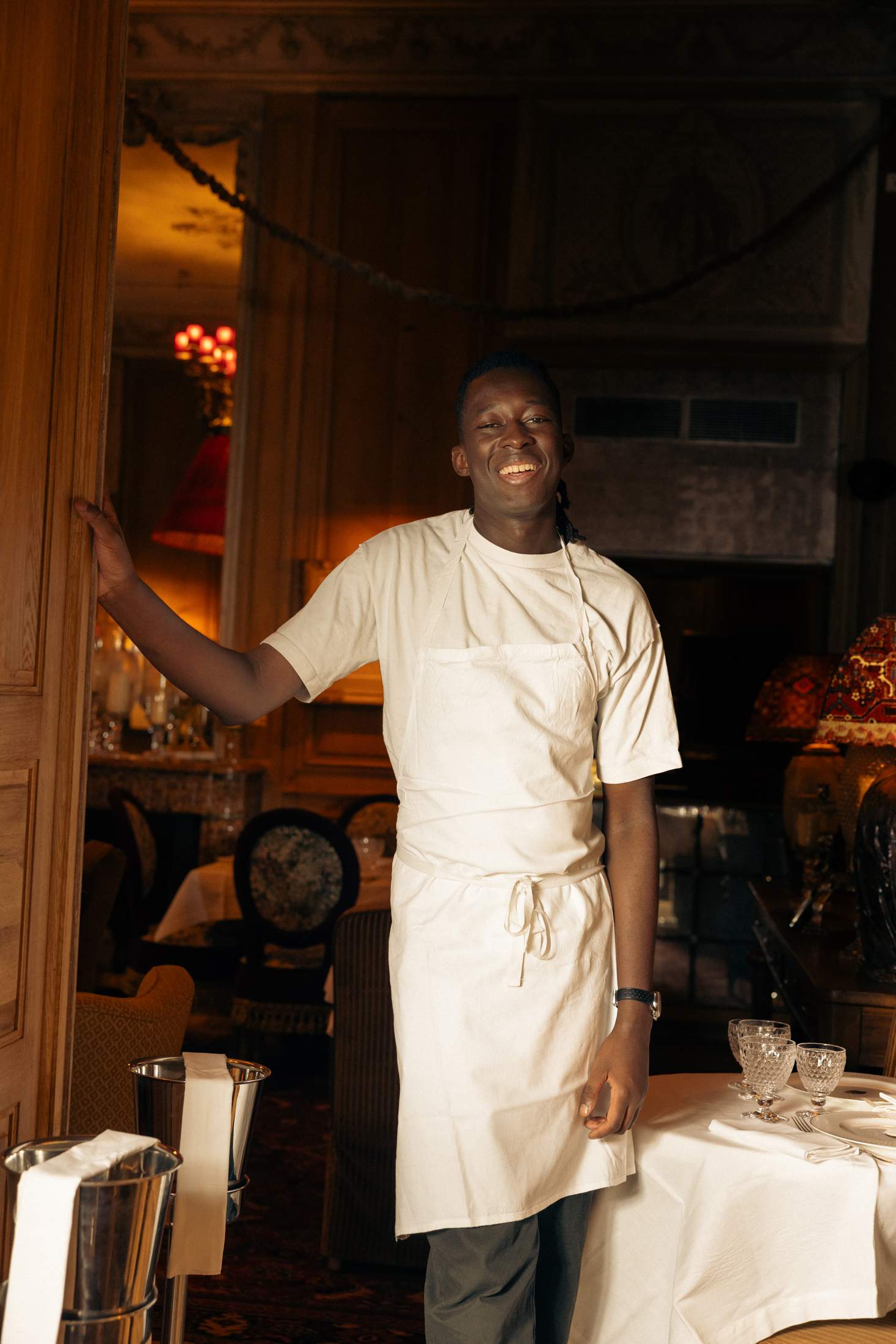


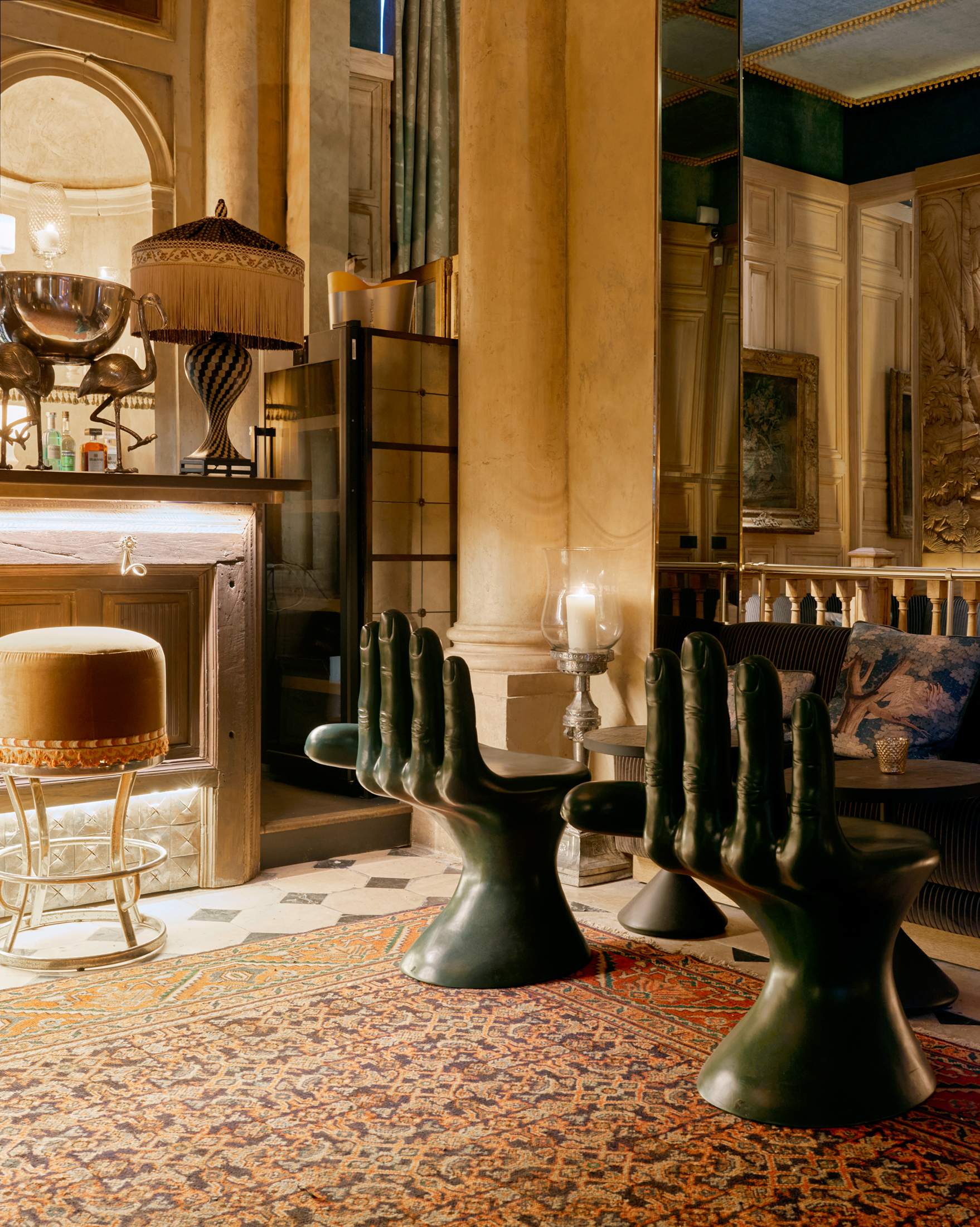
Lafayette’s latest spot, from French-Senegalese chef Mory Sacko, occupies a historic 18th- century manor house close to the Élysée Palace and the Place de la Madeleine. Sacko, who made his mark in the French capital with his unique cuisine combining French produce, Japanese techniques and his West African heritage, has already earned a Michelin star and prestigious partnerships with companies such as Louis Vuitton. Opened in the former residence of the Marquis de Lafayette and in partnership with the ever-expanding Moma restaurant group, this bolthole channels the decadent dinner parties once thrown here by the flamboyant civil war general.
Originally constructed by King Louis XV’s architect, Mazin, the house was completely redecorated by Barcelona-based Lazaro Rosa-Violan and turned into a 100-seater neo-bourgeois brasserie with three cosy rooms strewn with silk drapes and featuring period woodwork. The French-inflected cooking draws inspiration from the American and African continents, with dishes such as Cajun-style salmon with salsa coleslaw, gambas with marinated mango and jerk spices, and amberjack carpaccio with jalapeños and spicy sauce. It seems as though Sacko may be onto another winner.
8 Rue d’Anjou
Rub of the green
Ilis, Brooklyn
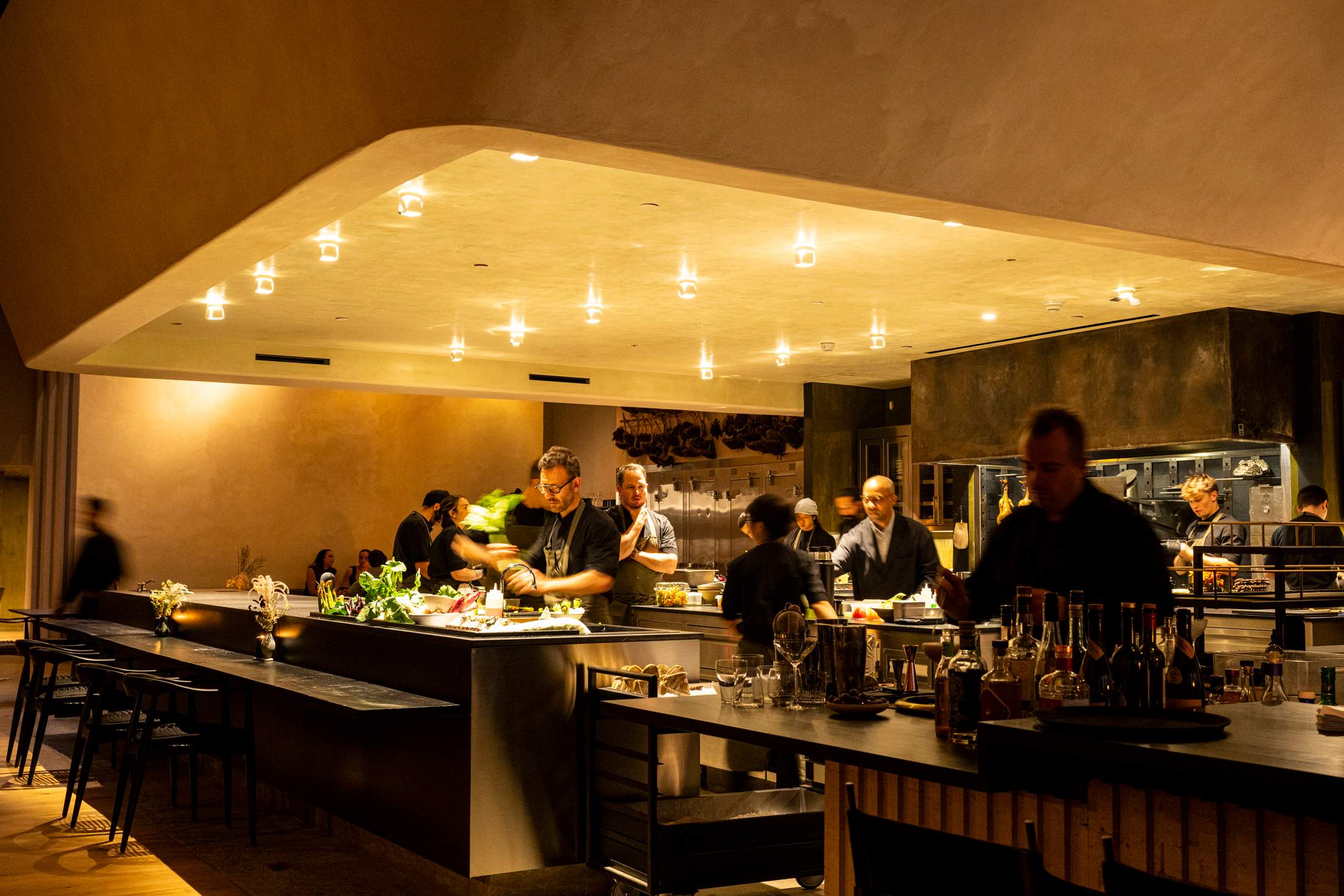
Tucked away in a former rubber factory in Brooklyn’s Greenpoint neighbourhood, Ilis was years in the making. The restaurant is the brainchild of Noma co-founder Mads Refslund and Will Douillet, the latter a former sommelier of Chicago’s three-Michelin- starred Alinea. The team transformed this huge warehouse into a fully kitted-out restaurant featuring a central kitchen complete with Demant live fire grills orchestrated by designer Tim Harrison. Ilis, which is a mash-up of the Danish words ild and is (“fire” and “ice”), offers a menu of seasonal ingredients, including plants, seafood and sustainable meat. On the plate, expect ingredient-forward dishes such as wild grilled duck from Pennsylvania, served with plum juice and seaweed-infused barbecue sauce and brown trout, cooked in its own roe butter and served with charred cabbage. There is no front or back of house – everything comes together in a concept that Ilis calls “one house”.
ilisnyc.com
The tasca at hand
Canalha, Lisbon
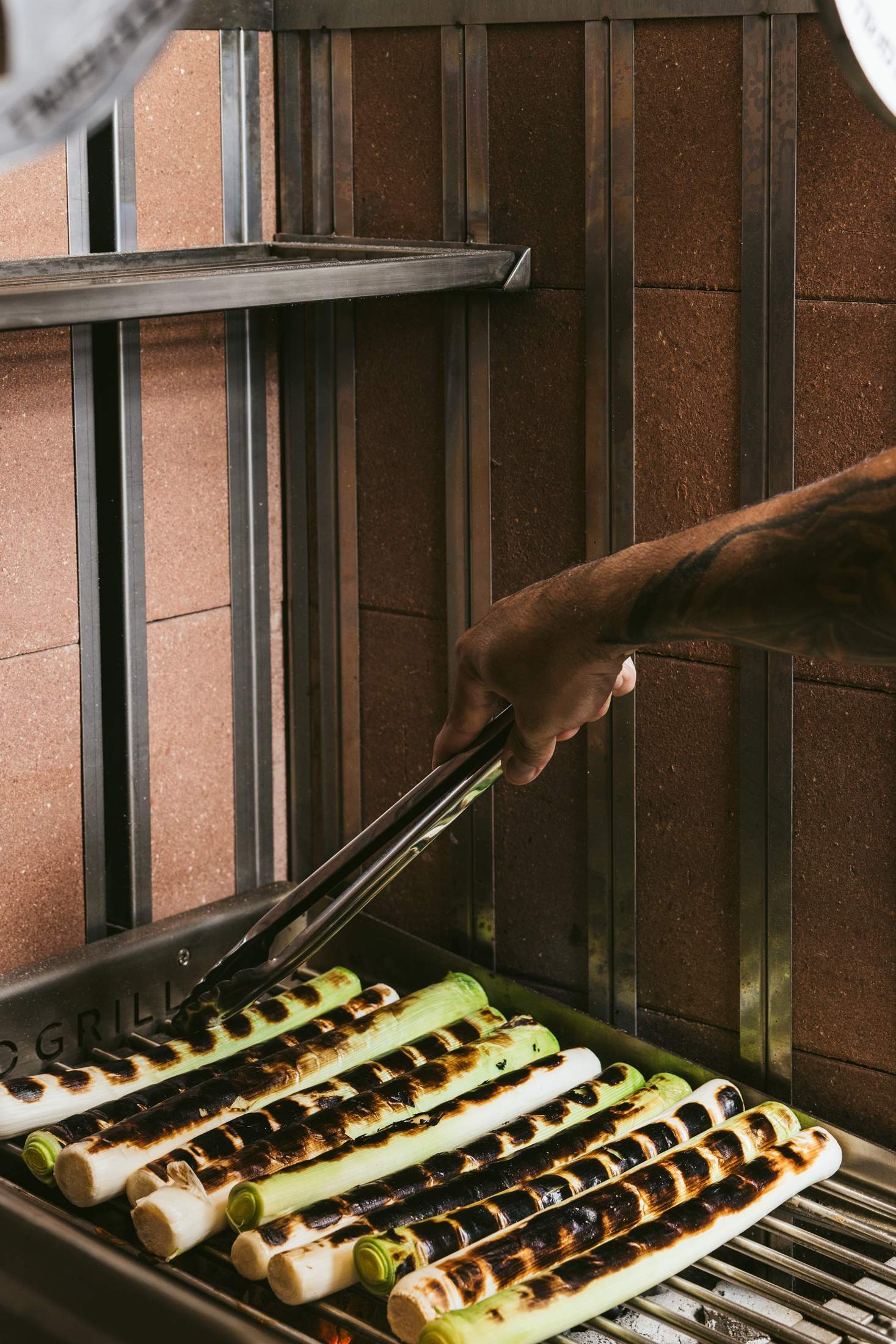
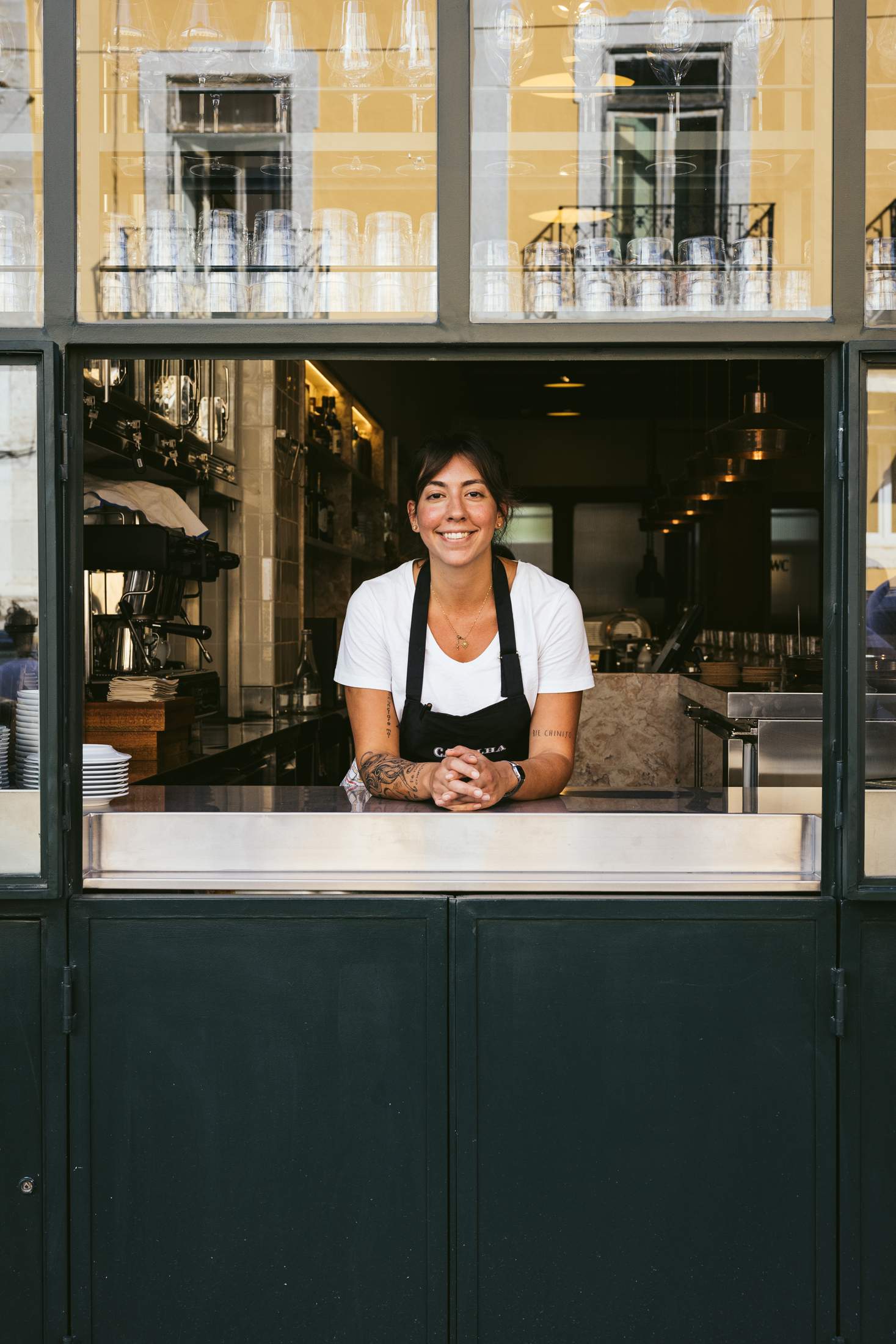

At the recently opened Canalha in the Portuguese capital, chef João Rodrigues has recreated the atmosphere of a classic neighbourhood restaurant, the sort of place the city has dearly missed in recent years. After working for Lisbon’s Michelin-starred Feitoria for more than a decade, Rodrigues has chosen an informal approach at this 44-seat locale, where he presents comfort food in surroundings that exude a classy 1960s vibe.
Patrons can share plates of popular staples such as codfish cakes, slices of acorn-fed cured Iberian ham. More substantial dishes include an open-faced omelette with prawns and onions, bluefin tuna tiradito and grilled lamb sweetbreads from Alentejo. Pair with draught beer or seek out wine with an Atlantic influence – perhaps a vibrant white from Azorean winery Adega do Vulcão or a tinta miúda red made by producer Las Vedras.
207 Rua da Junqueira
Garden variety
Los Jardínes de las Barquín, Buenos Aires

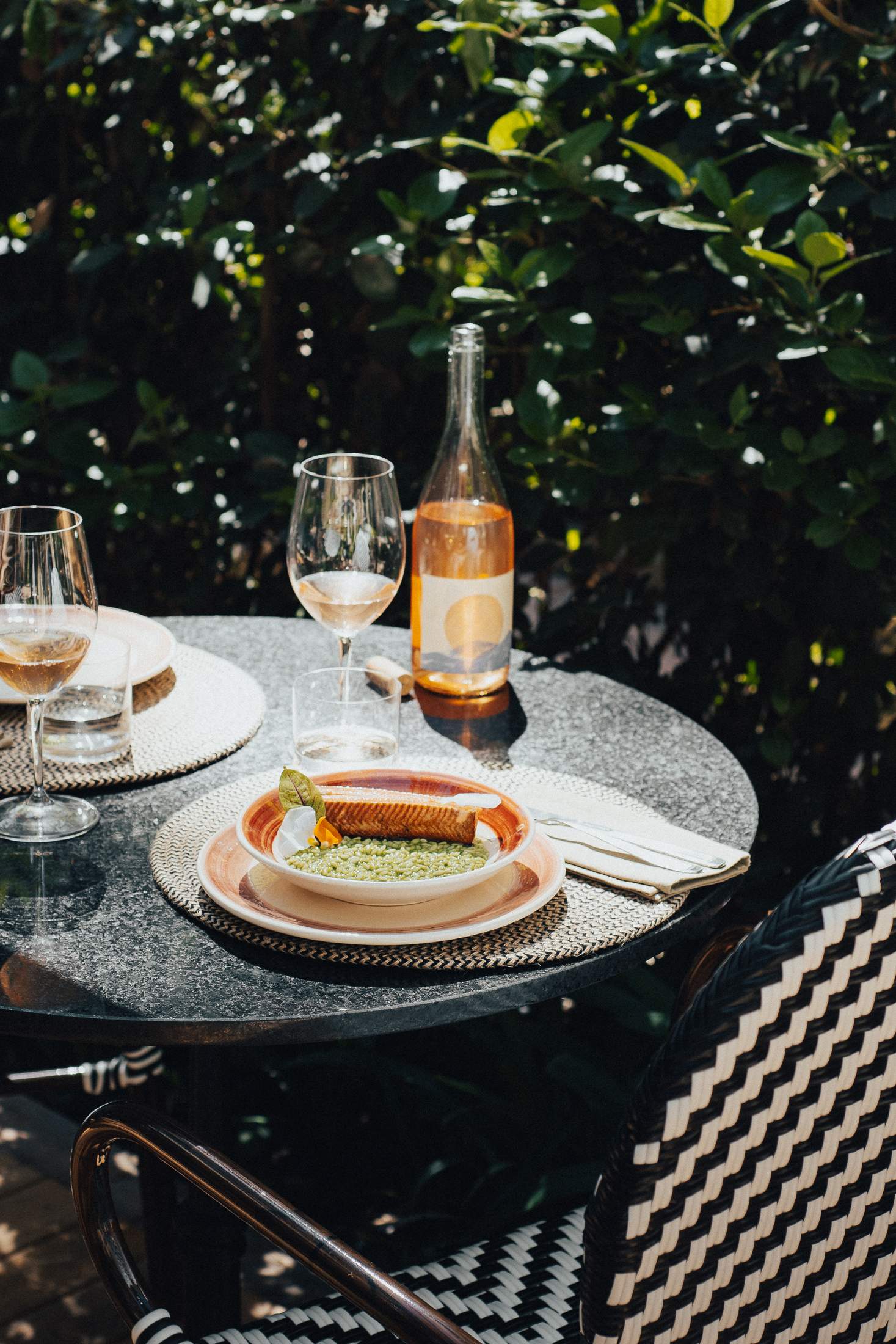

Elephant ear plants and towering palm trees frame this 40-seater in the Argentine capital. Opened in November 2023, it’s tucked away in the Andalusian gardens of the Museo Fernández Blanco. Most of the tables are outside with the rest in a greenhouse designed by architect Elizabeth da Coba.
Chefs Germán Sitz and Pedro Peña (the brains behind the city’s popular Niño Gordo restaurant) and Alejandro Féraud (Alo’s) cooked up the menu together. Spotlighting grains, the restaurant opens from breakfast to merienda (teatime): order a rye and buckwheat empanada filled with mushrooms or green barley risotto with fresh spinach, beans and peas. All dishes are served on hand-painted dishware by Lola Ibarguren. Earlybirds should flock for breakfast dishes such as shakshuka or egg-white tortilla, and a cortado before browsing the neo-colonial museum’s collection of viceregal silver and cusqueño art.
1541 125 394 950
Melting pot
Potager, Kuala Lumpur

Based in Kuala Lumpur’s leafy dining enclave, Bamboo Hills, Potager aims to showcase the best producers in the region. It’s helmed by Fukuoka native Masashi Horiuchi and South African-born De Wet Visser. The multi-course tasting menu combines contemporary French flair with Japanese precision while highlighting ingredients from different Malaysian states.
potagerkl.com
Menu with memory
Metita, Auckland
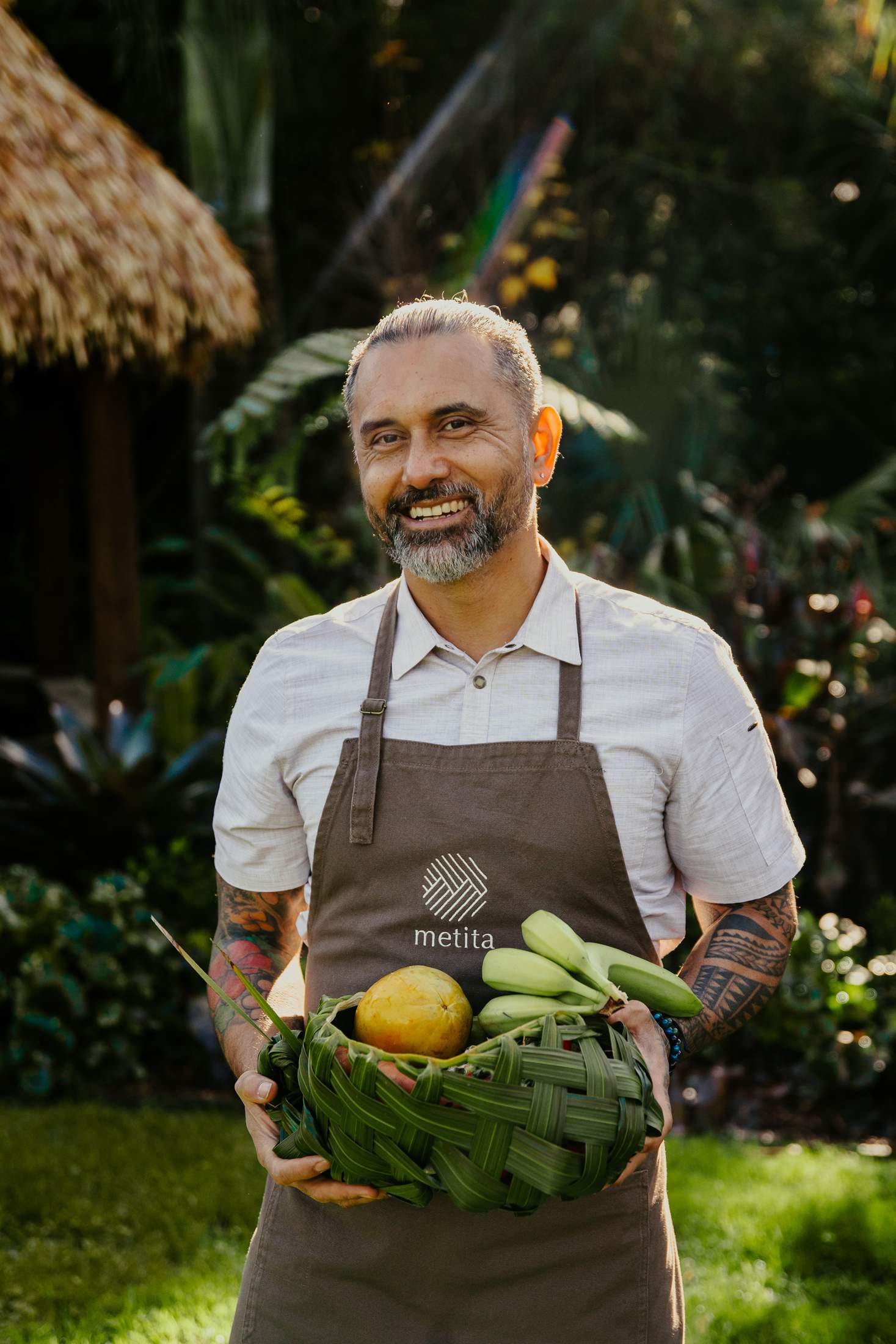
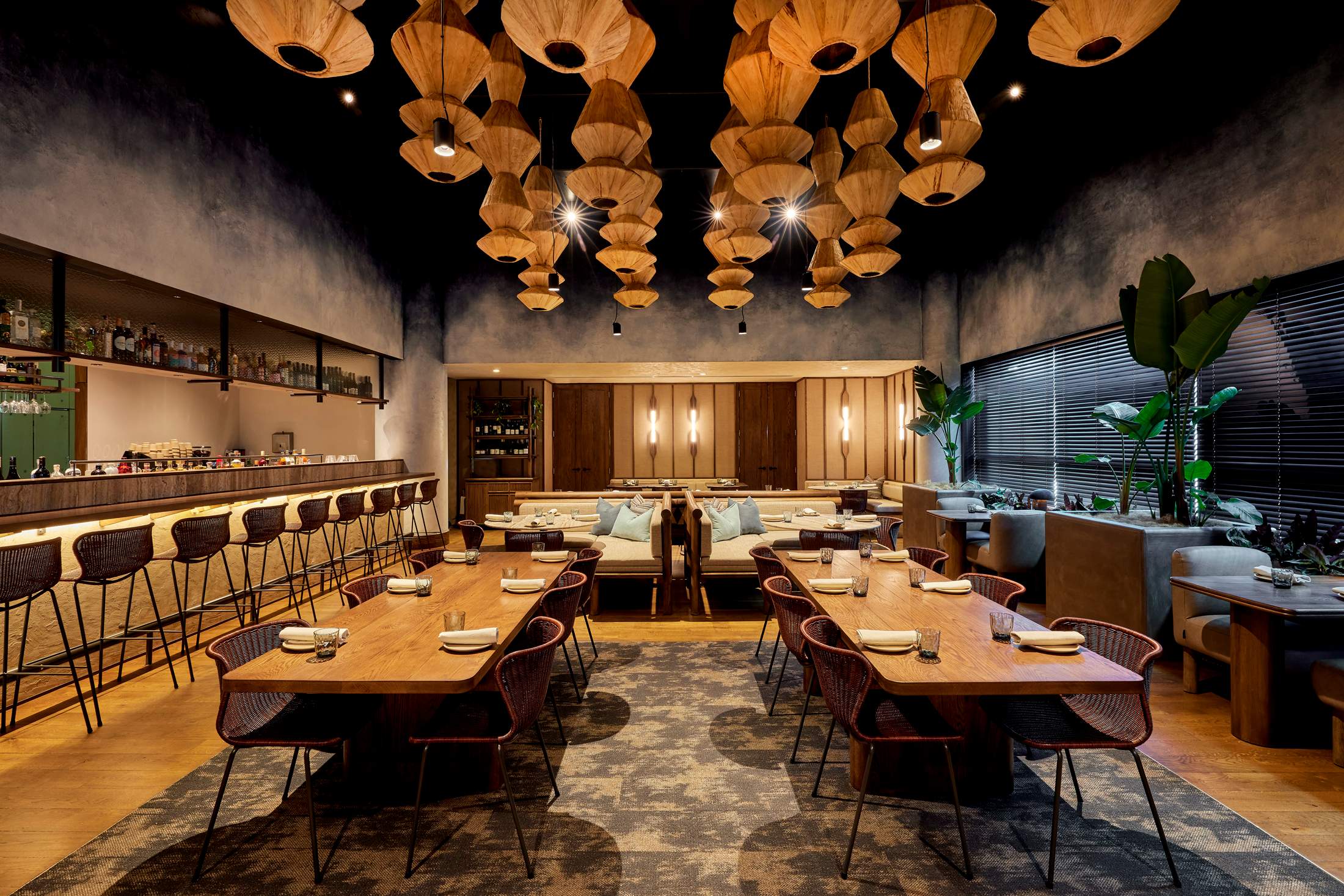
Michael Meredith is already one of New Zealand’s favourite chefs, well known for Mr Morris, his Britomart, Auckland restaurant that draws its ingredients from local sources but it’s inspirations from around the globe. For this new spot, though, he has returned to his roots with Pacific Island cuisine. Meredith’s slick new table in Auckland’s SkyCity complex was named after his Samoan mother, who once ran a pancake cart in support of her family. “I’m always remembering and adding the value of my mother’s cooking,” says the chef. The dining room was crafted by local design firm Ctrl Space and takes visual cues from traditional fishing tools. In reinterpreting delicious heirloom dishes and serving the likes of king salmon with betel leaf and pickled mango, and smoked-eel panikeke with spiced banana, Meredith pays homage to his family while invoking a personal nostalgia that not only heightens flavours but also creates mouthwatering new memories for guests.
skycityauckland.co.nz
House proud
Casa Newton, Tuscany

The Swiss are well known to excel in all matters hospitality, even beyond their own borders. At Casa Newton, set amid the rolling hills of Tuscany’s Val d’Orcia region, the Bertherat family from Geneva display yet again the Helvetic gift for hosting. Opened this past autumn, the 11-room hotel occupies a renovated 19th-century villa once home to a family who were relatives of famed physicist Isaac Newton.
The welcoming Sienna-brick hue of the façade hints at a rustic farmhouse yet, inside, a rich assortment of fabrics, tiles and colours form a sophisticated 1970s-style setting. “I think it’s important to not forget about the history of the house,” says architect and owner Antonie Bertherat‑Kioes. “Our idea [for the design] was to do it like it would be our home. We wanted a cosy atmosphere without it being old-fashioned.”
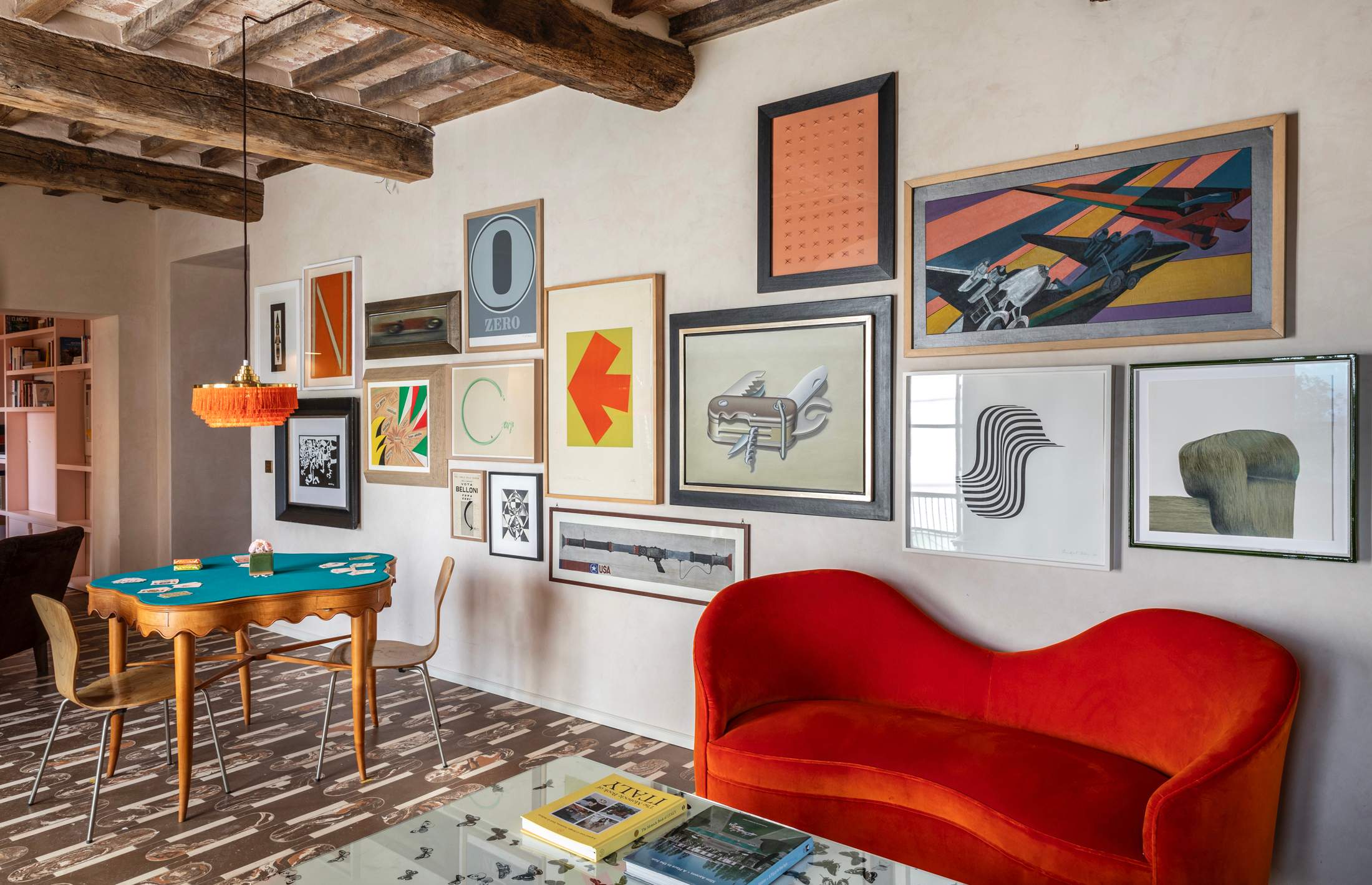
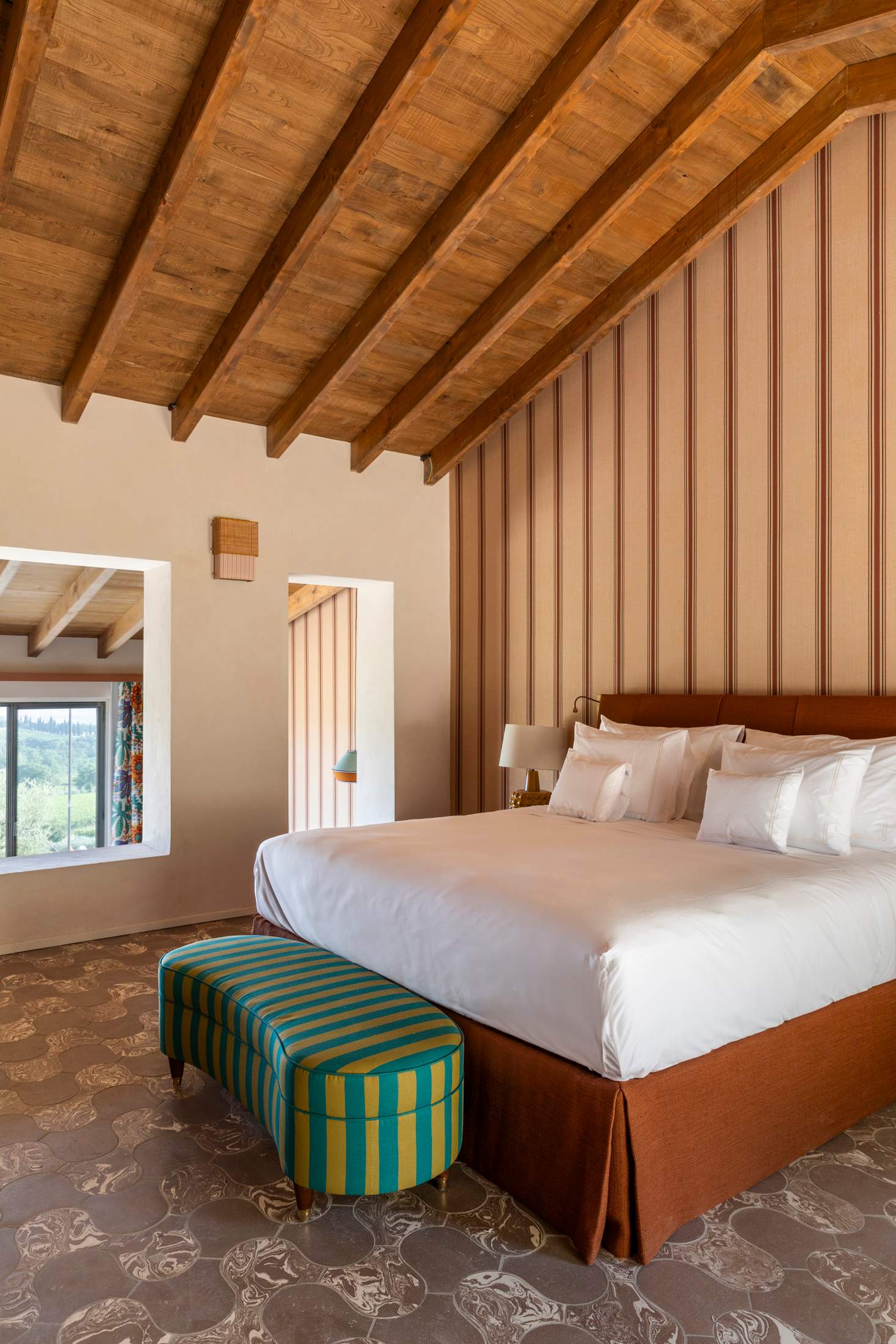
Throughout the three-storey villa and two farmhouse suites (the latter highlighted with India Mahdavi chairs in the sitting room), Bertherat‑Kioes installed terracotta flooring from Fornace Brioni in a range of vibrant and inviting patterns. Guestrooms feature a mix of mid-century furniture and lighting matched with bespoke pieces, including fabric-lined sideboards made in Prato that conceal the minibar.
Poolside, guests are free to relax under 1950s-inspired pink umbrellas and enjoy a glass of pet nat sparkling wine made using organic sangiovese grapes from the family’s nearby winery, Fabbrica Pienza.
casa-newton.com
Places to stay
New openings
Fresh paint and freshly made beds continue to shake up the world of hospitality, with global groups launching new ventures in must-visit places and old favourites getting welcome refurbs. All of which means that our bucket lists need an update too.
1.
Raffles at The OWO
London
Based in perhaps London’s most storied building, the Old War Office, this elegant site has been restored and now features an impressive list of dining spots, including three restaurants by celebrated Argentine chef Mauro Colagreco. The former politicians’ offices have also been redesigned as suites.
raffles.com
2.
The Ritz-Carlton
Portland, Oregon
Located right at the heart of the Rose City, The Ritz-Carlton’s inaugural opening in the Pacific Northwest pays homage to the region’s mountainous topography with a towering 35-storey property featuring 251 rooms. Visit the 20th-storey restaurant, Bellpine, for food cooked by local chef Lauro Romero, as well as views of the Cascade mountains.
ritzcarlton.com
3.
Six Senses Kanuhura
Maldives
The Six Senses hotel group is landing in one of the jewels of the Maldives with its new location on the island of Kanuhura. The resort is only accessible by seaplane or speedboat and boasts 91 spacious villas overlooking white-sand beaches and the turquoise reef.
sixsenses.com
Next generation
Athens
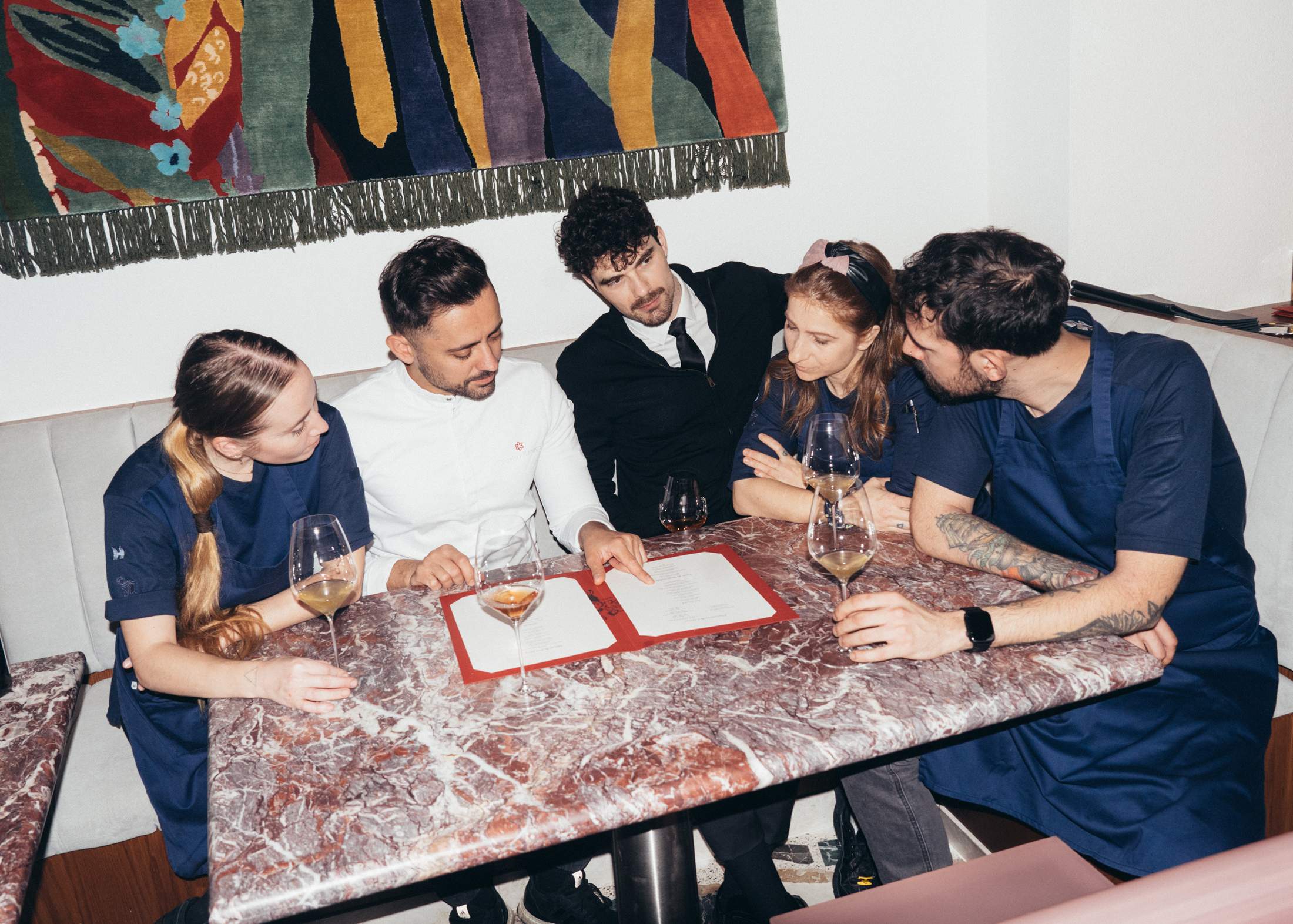
The past 20 years have seen Athens stuck in a cycle of boom and bust. The success of the 2004 Olympics was followed years later by the financial crash. And just as the city began to get back on track, the pandemic hit. But from the ashes has emerged one of Europe’s most exciting food scenes, buoyed by young restaurateurs unafraid to play with their culinary heritage.
One of the most hotly anticipated new arrivals is Gallina, which opened in the Koukaki neighbourhood in October. “Our menu is modern and old-fashioned at the same time,” says Vasileios Bakasis, restaurant critic, food journalist and ceo of Gallina’s parent group, Prime Rebel Snob. “It’s comfort food with a fine-dining spin.” Dishes like turbot in assyrtiko wine sauce and rotisserie chicken with miso beurre blanc are served to diners seated on custom chairs by New York studio Objects of Common Interest.
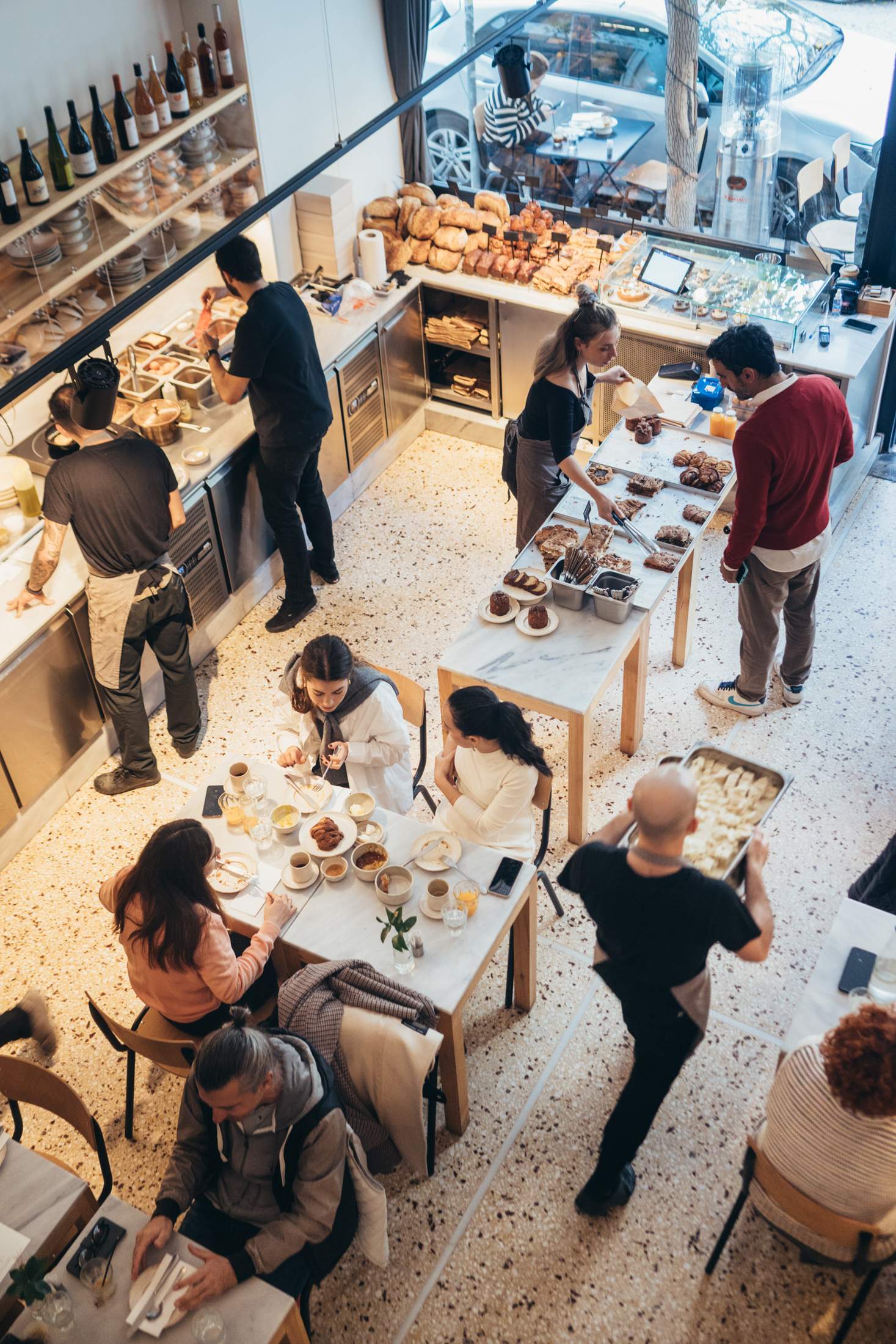
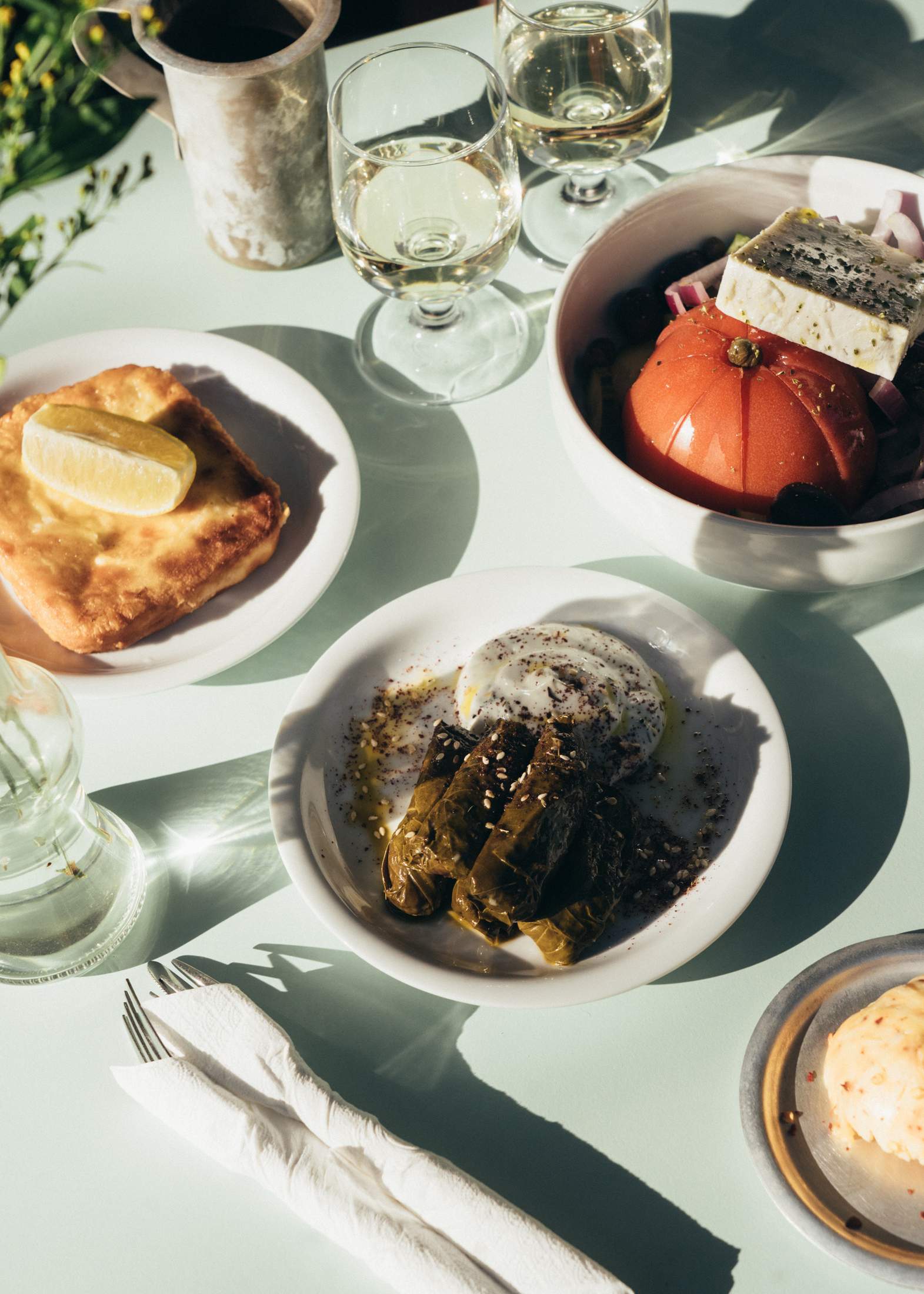

Further north, in up-and-coming Kypseli, some of the most coveted tables in the city are found at Allios Kafeneio, which opened in July. “I wanted to update the kafeneio and bring it into a new era,” says owner Kostas Kafetsis. A kafeneio is a traditional Greek café-cum-bar that serves light meze dishes in the evening. Kafetsis’s take involves small plates of slow-roasted lamb, chicken croquettes and fried saganaki cheese drizzled with lemon, all served alongside natural wines from the Peloponnese.
Celebrating small Greek producers is also the mission of Spyros Pediaditakis, who opened restaurant and bakery Akra with chef Giannis Loukakis last spring. The two met when Pediaditakis was working as a pastry chef at two-Michelin-starred restaurant Spondi. Three years later the duo set up Akra around the corner in Pagrati. “We find our fruit and vegetables at the local organic market,” says Pediaditakis. “And we update the menu daily according to what we pick up there.”


